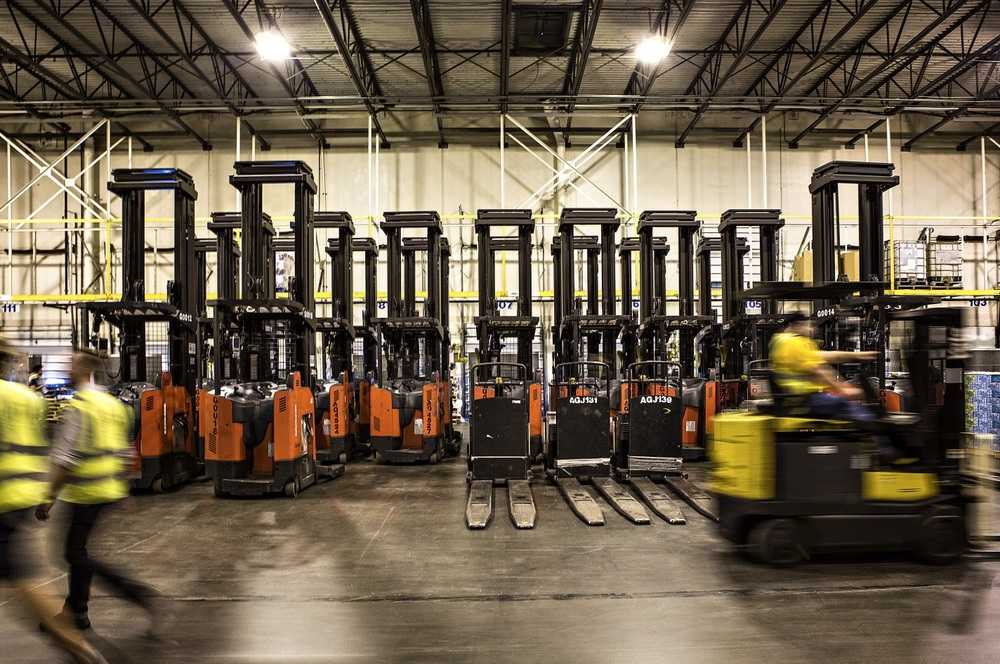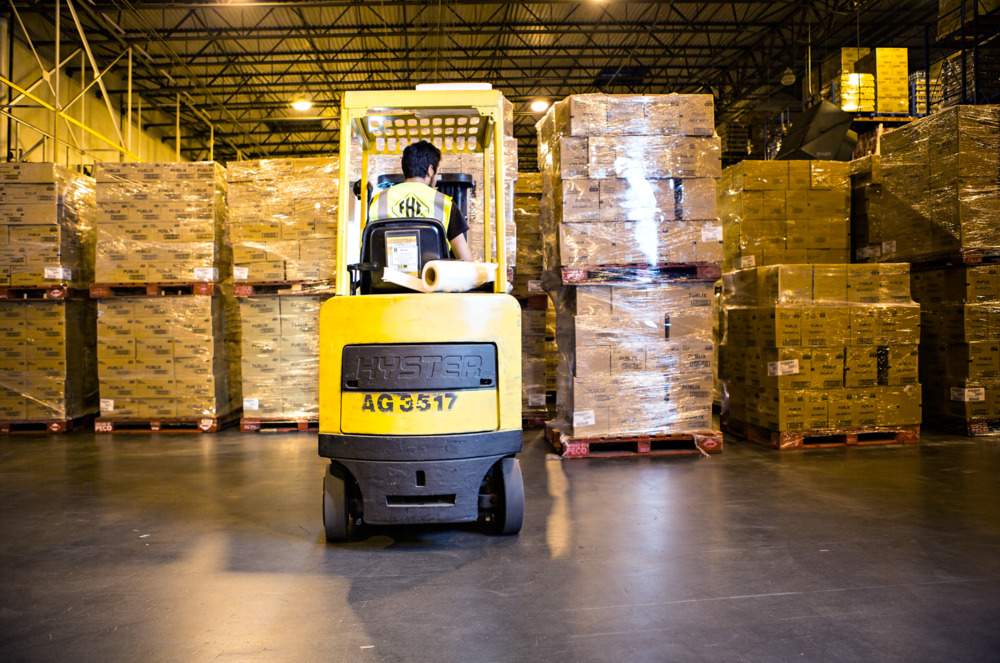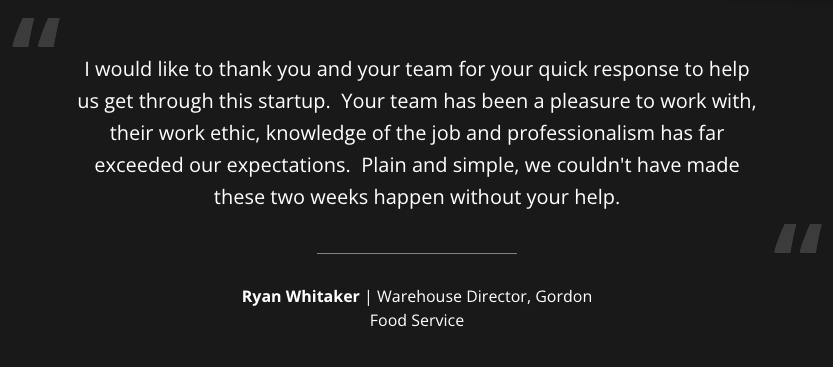
Questions answered in this article:
It’s not news anymore that warehousing and logistics operations are struggling to attract, hire, and retain associates for a variety of warehouse positions. It was a difficult task pre-COVID that’s become next to impossible in some regions of the country where multiple facilities are located in close proximity to each other.
Steve Banker of ARC Advisory group believes multiple warehouse job openings are available per applicant. He recently examined the shrinking labor pool in the field in his Forbes column, where he notes that pre-COVID there were 2-5 applications per job. And the industry’s growth trajectory will continue to escalate according to the U.S. Bureau of Labor Statistics, which projects roughly 941,1000 openings for general laborers and material handlers to be added annually through 2030.
Not only is finding warehouse associates harder than ever before, but the volumes of inventory and avalanche of orders warehouses and distribution centers are attempting to fill have also risen tremendously since the first quarter of 2020, exponentially increasing many warehouses’ hiring needs. More work with fewer warehouse workers means operations managers are struggling to keep up with customer expectations for later order cut-off times and fast, free deliveries.
In short, they’re understaffed and overwhelmed.
To help these warehousing operations catch up — and catch their breath — FHI offers FHI NOW, our on-demand temporary warehouse staffing. We deploy teams of experienced warehouse managers and staff that help stabilize an operation by supporting rapid growth, temporary needs, or seasonal volume. Using FHI’s on-demand staffing services to augment an existing workforce allows an operation’s management to refocus and address other issues.
You might be wondering exactly how this works. You’re not the first. The following sections answer the most frequently asked questions (FAQs) about FHI NOW service.

Prior to deploying our team, FHI works with an operation’s management to determine the staffing solutions needed to augment existing labor and rectify the current problem. Based on the customer’s needs FHI will build a custom support model, then provide warehouse staff whose qualifications meet those needs. Their experience might include order selection, equipment operation, loading and unloading of trailers, light industrial work, or general warehouse labor. We can also provide associates for start-up support or to address a labor disruption.
FHI team members filling specific roles that require certification (forklift operators, for example) are site certified to ensure certifications are current and up to date. They also are familiar with — and comfortable working in — a broad range of operation types, including manual, semi-automated, and automated.
FHI NOW's labor associates are trained “the FHI Way.” This includes how to work safely and a comprehensive range of standard procedures we established to ensure each team works as efficiently and accurately as possible. Further, because of their previous warehouse expertise, the onboarding and learning curve is extremely small for FHI associates. They are highly productive from day one. We know this because we monitor and measure their productivity based on industry benchmark key performance indicators (KPIs).
Each FHI NOW team consists of at least 10 associates accompanied by designated onsite leadership. FHI’s team leaders have both warehouse operations and people management experience. They act as the onsite interface with the company’s operations team, answering questions, addressing concerns, and communicating any process changes or handling requests to the FHI associates. They also train their team of associates on the processes specific to the operation.
Currently, there are more than 1,600 associates in our network, from pickers and packers to loaders and receivers. Their areas of expertise include workflows throughout receiving, order consolidation, replenishment, put-away, shipping, and more. Because they are recruited from throughout the U.S., FHI’s associates are much more flexible and dependable than those sourced from other resources, such as temporary warehouse staffing agencies. This geographic diversity enables us to deploy on-demand labor teams to areas where the labor force is exceptionally limited.
We deploy as many associates to a single operation as needed. FHI has provided as many as 150 associates to one operation and has the capacity to provide more if needed. Each deployment’s duration varies according to the customer’s needs; some have lasted in excess of two years.
The majority of FHI’s customers engage an FHI NOW team because they’re experiencing an increase in inventory and order volumes but cannot hire and retain enough full-time associates to keep pace with their customers’ expectations. Across all the industries we serve, FHI’s customers are experiencing a sustained 15% to 25% increase over pre-COVID order volumes.
Like most companies that operate warehouses — particularly those in regional distribution hubs where multiple facilities are located close together — it’s hard to attract and retain workers thanks to strong competition. When the operation down the street offers hiring incentives such as higher hourly wages or signing bonuses, associates are easily persuaded to job jump. Those pools of workers were strained even further during COVID’s peaks when workers were encouraged to quarantine at home for 10 to 14 days following potential exposure.

It doesn’t. In fact, many of our customers have grown disenchanted with the labor provided by local temp agencies because they simply connect job seekers to operations with staffing needs. There is not guaranteed vetting or qualification check when using these types of staffing companies.
Temporary workers sent by an agency often don’t return after a day on the job, requiring the operation to allocate its own in-house trainers to bring a new group of temps up to speed every day. Further, because temporary workers are not guaranteed to have experience in warehousing, they tend to perform tasks more slowly and with less accuracy, relying on other team members to pick up the slack.
FHI provides warehouse staffing services from our own team, which undergoes a rigorous hiring process to ensure they have the knowledge and skills to assist any type of distribution or warehouse operation.
We also provide an onsite leader to train and guide the temps, as well as to interface between them and the in-house operations team and leadership. Any infractions must be dealt with by the operations staff as well. With FHI NOW, all FHI associates are managed directly by their team’s onsite leadership.
In addition to a highly productive team of experienced warehouse associates led by onsite leadership, FHI customers attain measurable results at a predictable cost and they have noted several other benefits:
We use a three-step engagement process:
Post-agreement, FHI can have a fully functioning team onsite and ready to work in as little as 72 hours.
Want to learn more? We’re here to help.
Schedule a call and we’ll be happy to answer any other questions and offer additional details into how FHI NOW services can help you address your current workforce challenges.
In any market, your supply chain can make or break your ability to compete well. Don't leave that to chance. We can help you create a stronger operation, so you never fall behind the competition.
Stop worrying about labor challenges and start enjoying a safe, lean, and rock-solid supply chain.
(800) 849-3132 | © FHI. All rights reserved.